This large area of Victorian floor lay hidden away for several years under carpet on a former care home in Wolverhampton. The building was being renovated, and the client wanted to bring the floor back to life as it was in a poor state.
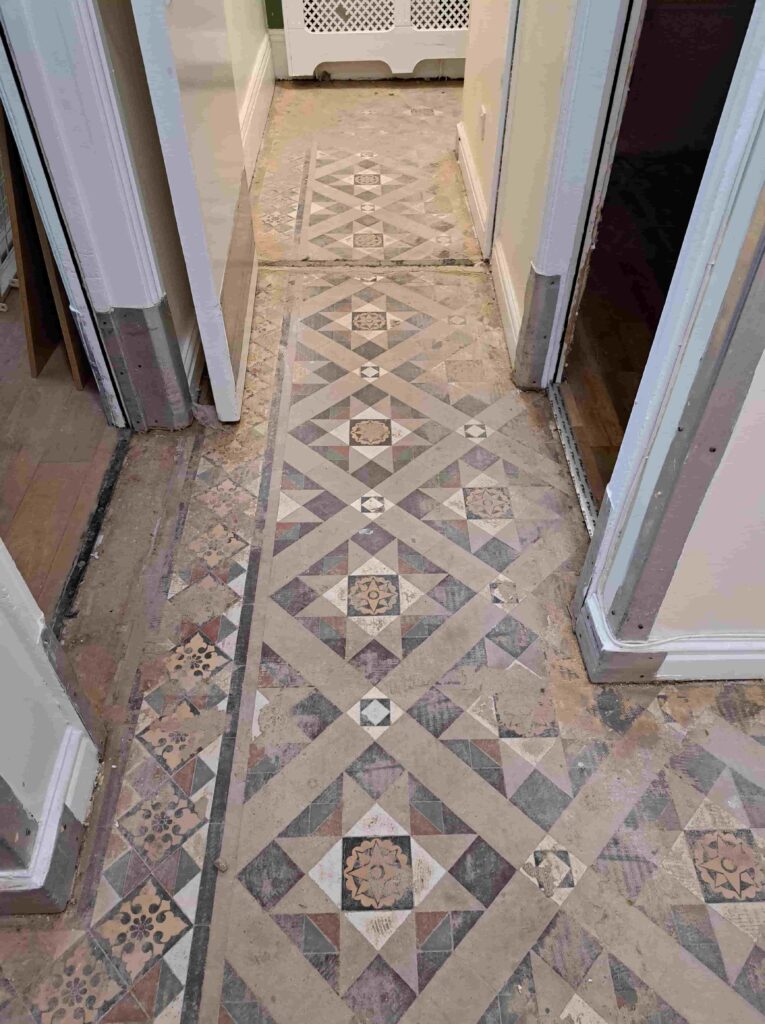
I went along to survey the floor and conduct a test clean, which worked out very well and impressed the client. Happy with the potential result I was asked to do the work and the job was booked in.
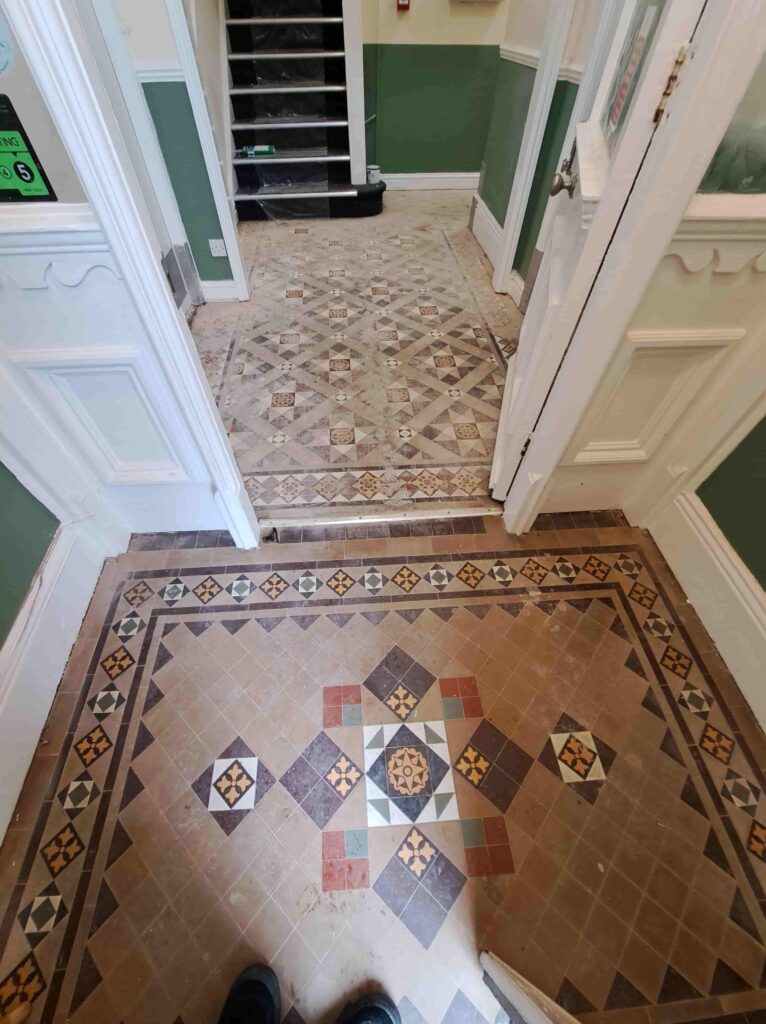
Cleaning and Repairing a Victorian Tiled Hallway Floor
On the first day I repaired the threshold tiles under four doorways, which had either been replaced with concrete or had tiles missing. I had to clean them up first to see exactly what was missing. After completing those I regrouted the areas that needed to be.
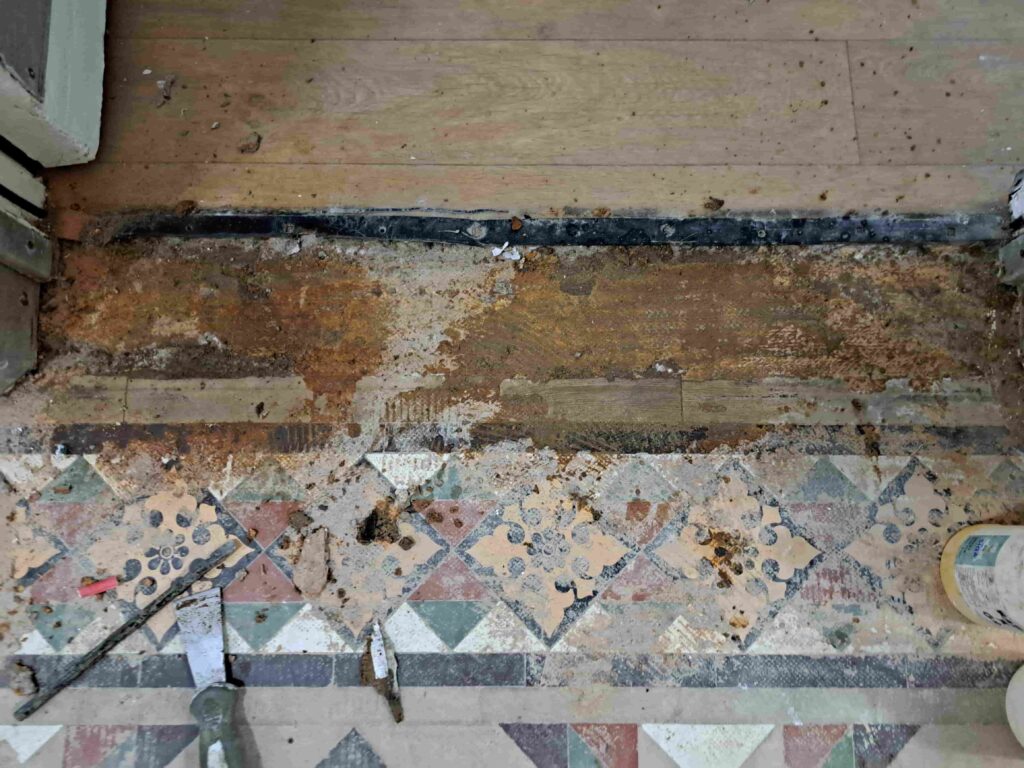
The next two days were spent deep cleaning the tiles which was covered in a very thick carpet adhesive, which was difficult to remove, especially in the hallway area. I gave the floor a coat of Tile Doctor Remove & Go and let that soak in to soften the glue so it could be removed more easily. The glue was then scraped off the affected areas with the help of a steamer.
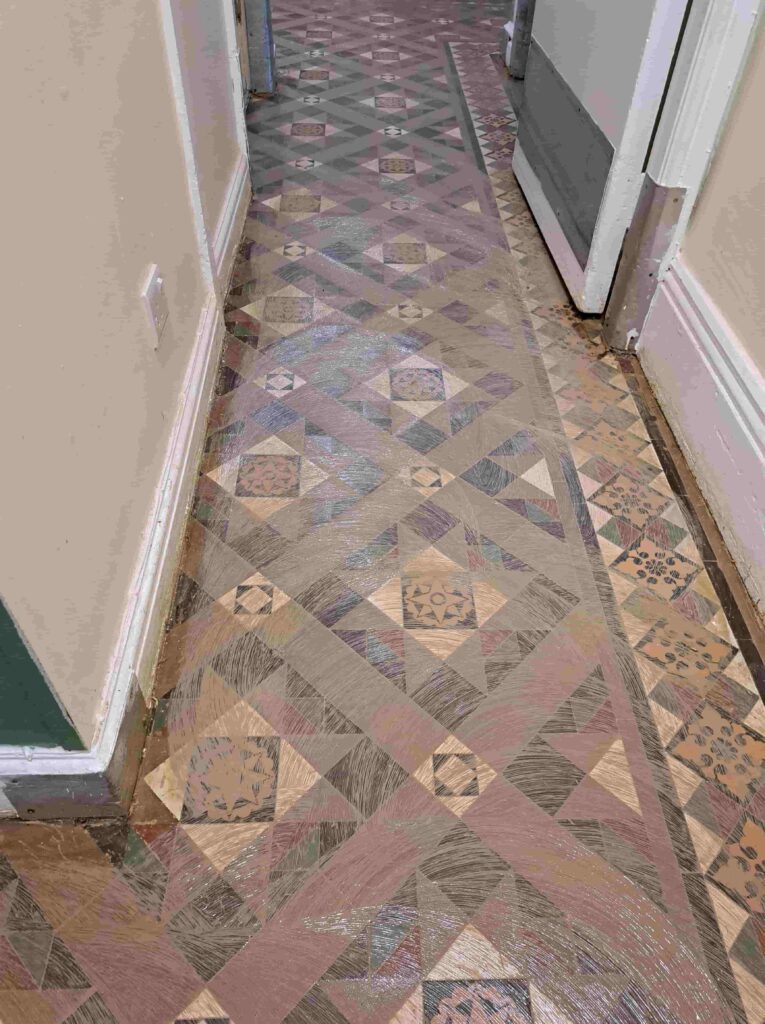 |
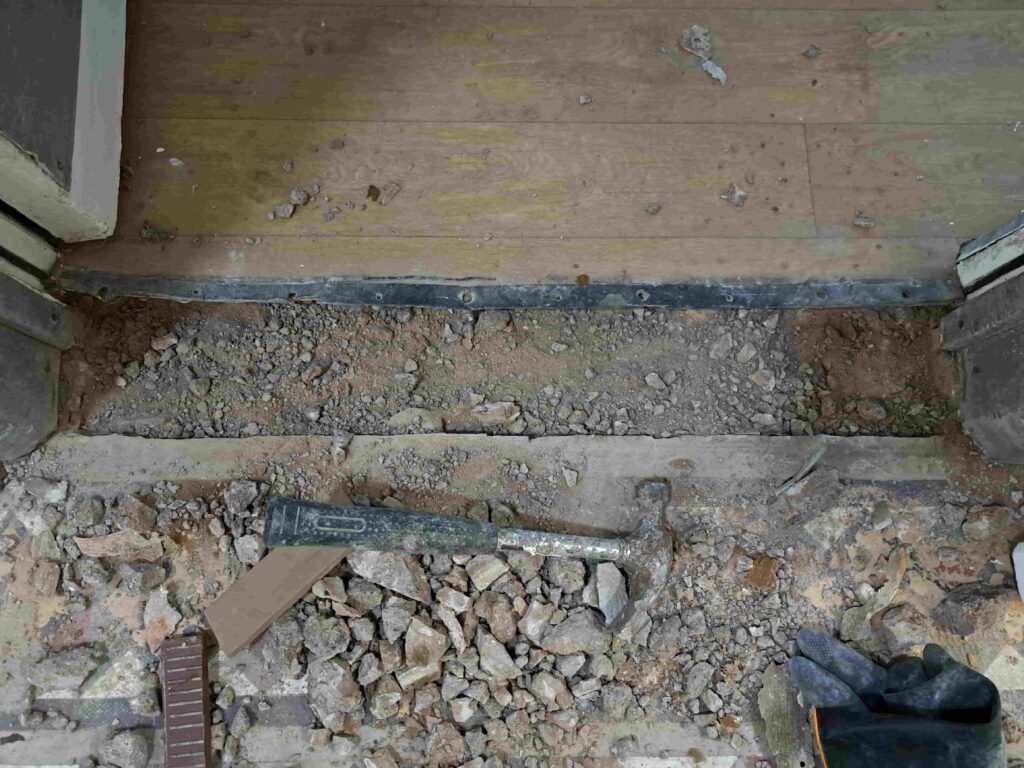 |
Once the majority of adhesive had been removed, I applied more Tile Doctor Remove & Go combined with Tile Doctor Oxy-Gel and let it dwell on the floor for ten more minutes. Then a 120-grit carbide silicone brush pad fitted to a weighted rotary machine was run over the tiles to remove the grime and dirt. The resultant slurry was then rinsed off with an Airflex machine which applies and removes hot water under pressure to give the floor a thorough rinse.
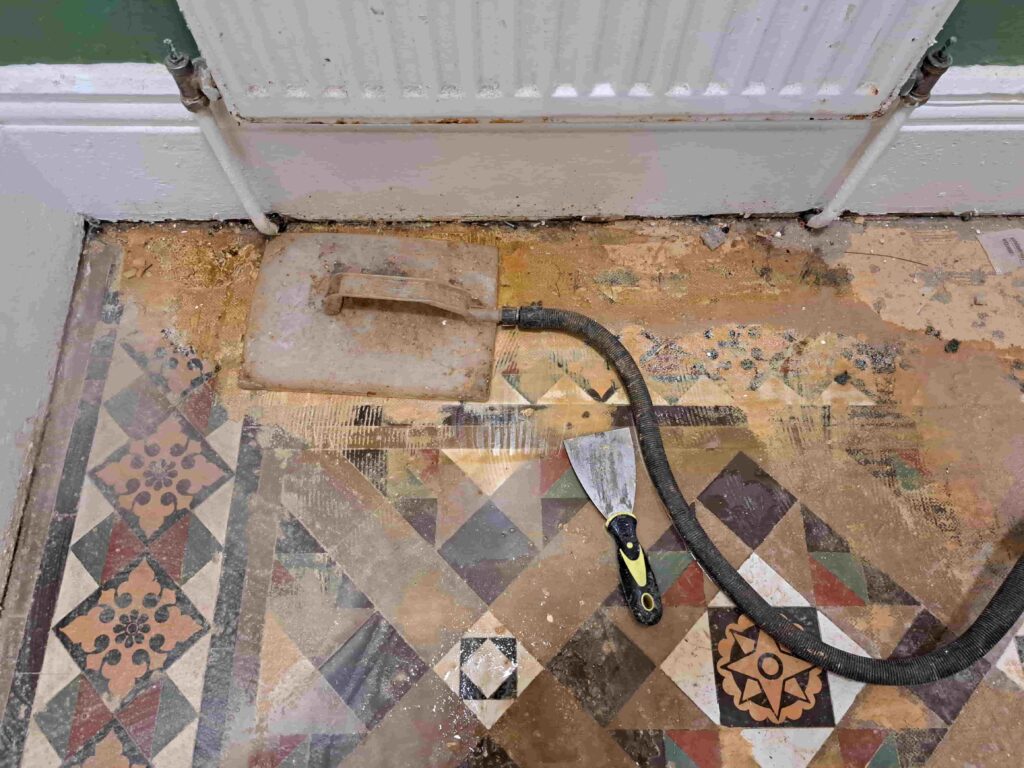
Next, the floor was treated to an acid rinse using with Tile Doctor Grout Clean-Up, this counters the formation of efflorescence which is a common problem with old floors that don’t have the benefit of a damp proof membrane. This product also removes old grout haze and other mineral contaminates which detract from the overall appearance of the tiles. This process was applied in a few sections at a time due to its size.
I set up a couple of air movers to help get the floor dry and to further improve the appearance of the tiles I went over the floor with a very fine 3000-grit pad. This pad is fitted to the rotary floor machine and applied dry with only a little water sprayed onto the tiles.
Before finishing for the day, I gave the floor a single coat of Tile Doctor Stone Oil and clothed off any excess. The floor was then left to dry off overnight with the help of the air movers.
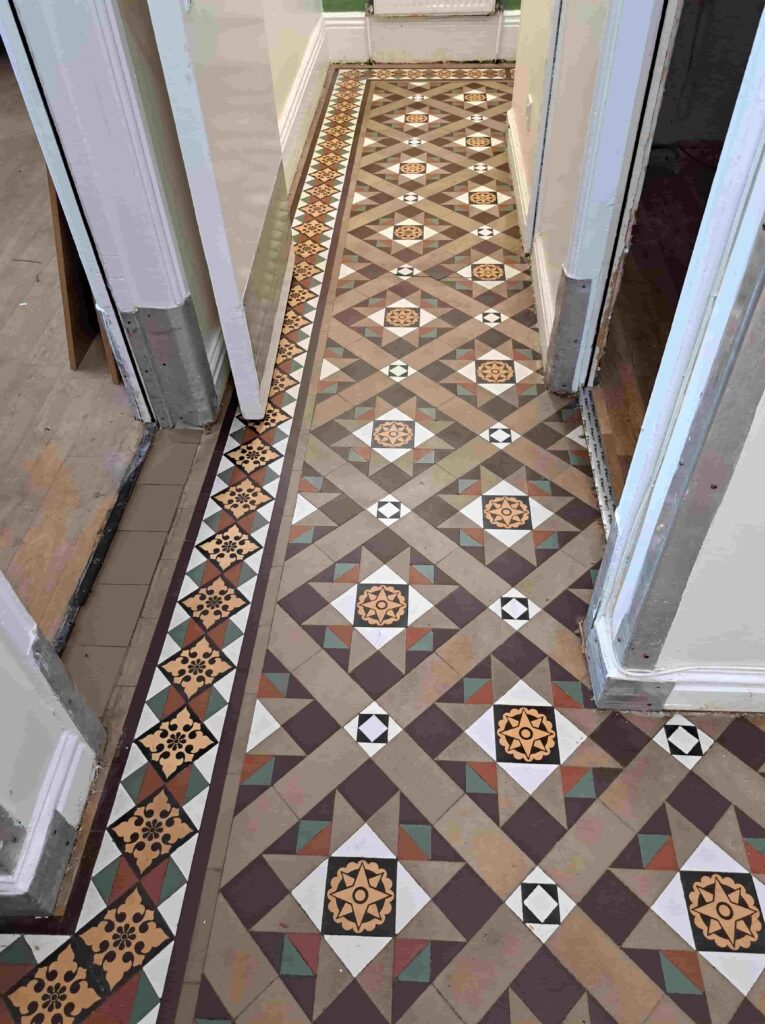
Sealing a Victorian Tiled Hallway Floor
The next day I returned to seal the Victorian tiling with Tile Doctor X-Tra Seal buffing off the excess with a white pad. This product is fully breathable so will allow for moisture to rise through the tile from the foundation and not become trapped which could lead to damp problems later. Two coats were applied to add long lasting protection and a beautiful finish.
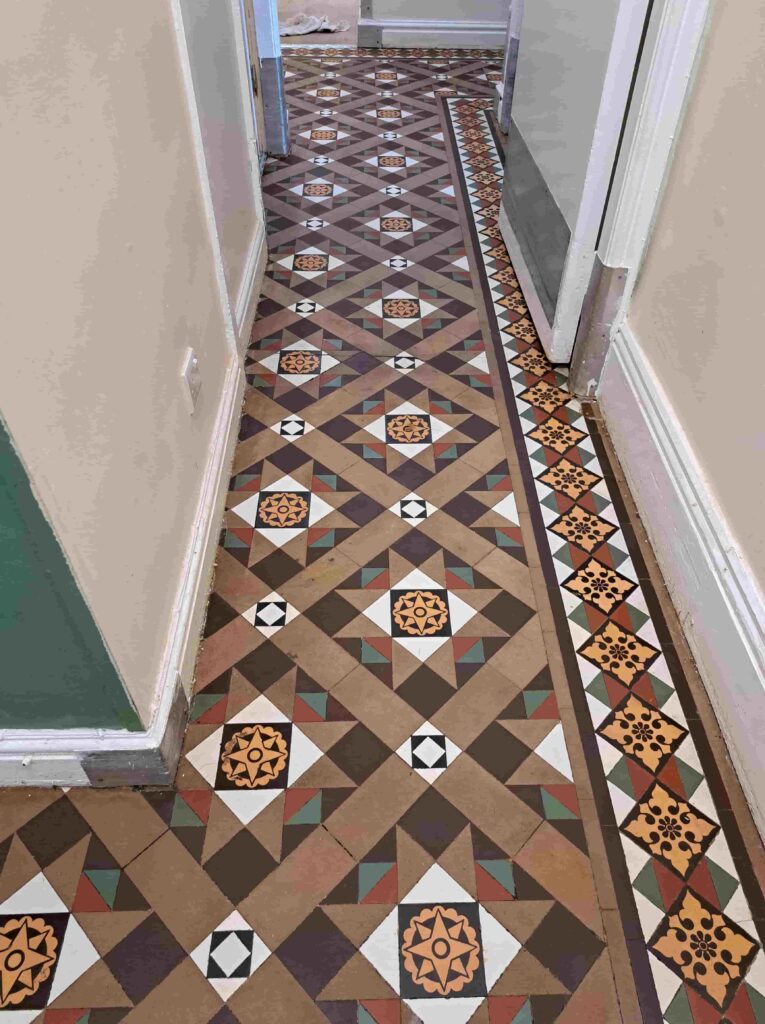
I think you will agree the pictures really show off the improvement to the floor. Certainly, my client was very happy with the work we carried out. For aftercare I left the client with a bottle of Tile Doctor pH Neutral Tile Cleaner to help maintain the floor going forward.
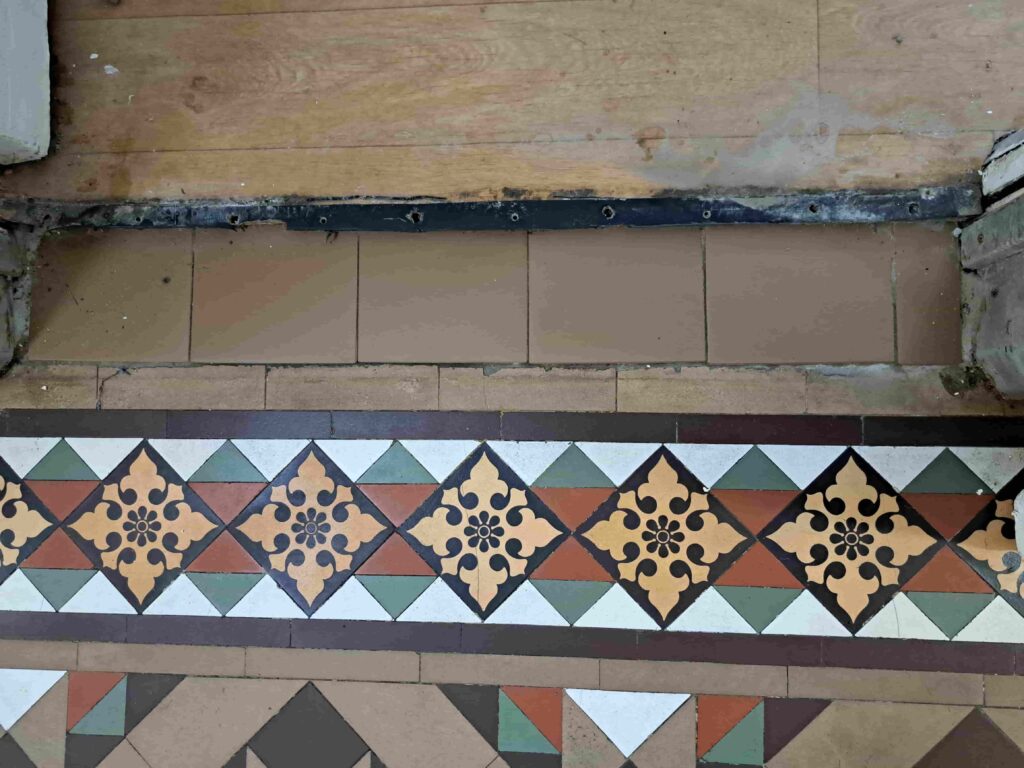
Source: Hallway Floor Tile Repair and Restoration Service in Wolverhampton Birmingham
Never use a strong cleaning product or steam cleaner for the regular cleaning of sealed tiles as this will reduce the life of the sealer. We recommend using a specialist tile cleaning product such as Tile Doctor Neutral Cleaner for the regular cleaning of polished and sealed surfaces, if you do use another product always read the label first, most supermarket tile cleaners are only suitable for use on Ceramic and Vinyl floors.